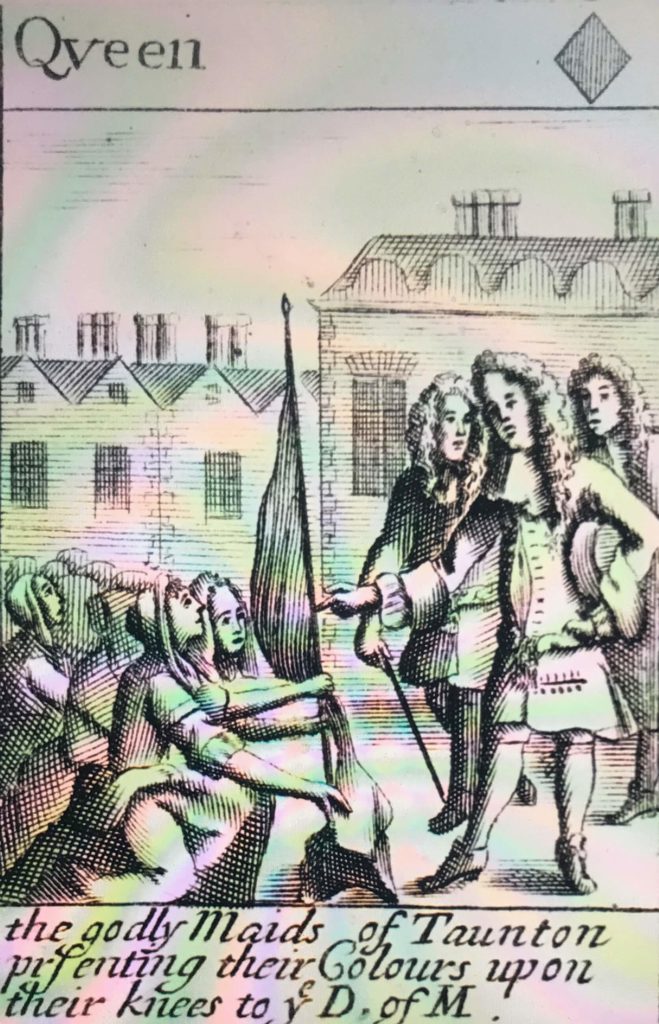The Battle of Sedgemoor: Remembering England’s Last Pitched Battle on its 340th Anniversary
This week marks 340 years since one of the most consequential battles in English history unfolded across the Somerset Levels. The Battle of Sedgemoor, fought on July 6, 1685, would prove to be England’s last pitched battle—a desperate clash that sealed the fate of a rebellion and changed the political landscape of the nation.
The Monmouth Rebellion Begins
The story begins with the birth of James Scott, Duke of Monmouth, the eldest illegitimate son of King Charles II and his first 18 year old mistress Lucy Walter (the future King Charles II was in exile in Rotterdam and was also 18 years old at the time). When the Catholic James II ascended to the throne in 1685, Protestant fears of a return to Catholic rule created fertile ground for rebellion. Monmouth, a Protestant claimant to the throne, landed at Lyme Regis from three ships and with a small force, hoping to capitalize on religious tensions and popular discontent. He had considerable military experience having served in the second and third Anglo-Dutch wars, and the Franco-Dutch war.
The rebellion gained momentum as Monmouth’s army marched through the West Country. Monmouth was declared king in Taunton, Somerset. However, what began with hope and fervor would soon meet its tragic end in the marshy fields near Westonzoyland.

The Fatal Night at Sedgemoor
On the night of July 5-6, 1685, Monmouth attempted a surprise attack on the royal forces camped near Bridgwater. His plan was bold but ultimately flawed—a night march across the treacherous Somerset Levels to catch James II’s army off guard. The attack faltered in the darkness and difficult terrain, and by dawn, Monmouth’s forces, many of them 3,600 farmers and farm labourers, were scattered and defeated. John Churchilll, the future Duke of Marlborough, was a commander of the smaller but more professional Royalist forces. Churchill was later to be a key player in the military conspiracy which led to the deposition of King James II.
The battle’s aftermath was swift and brutal. Monmouth himself fled the field but was captured just days later. On July 15, 1685, the would-be king met his end on Tower Hill, beheaded after a botched execution that required multiple blows of the axe.
The Bloody Assizes
The defeat at Sedgemoor was only the beginning of the tragedy for the West Country. What followed became known as the “Bloody Assizes”—a series of trials conducted by Judge George Jeffreys, James II’s Lord Chancellor, that would leave an indelible mark on Somerset’s collective memory.
In Taunton and across the region, Jeffreys presided over proceedings that found 1,381 people guilty of treason. The reprisals were savage and public, with many rebels hanged in town squares as examples to others. Those who escaped the gallows often faced transportation to Barbados, where they formed an impoverished white community that became known as the “red legs.”
The memory of these brutal reprisals lived on for generations in Somerset communities, with families passing down stories of relatives who suffered under Jeffreys’ harsh justice. Even centuries later, the echoes of the Bloody Assizes remained part of local folklore. I grew up in Wellington, Somerset, some seven miles from Taunton where I went to boarding school. My sister’s great friend at school was a descendant of a farming family that lost three brothers hanged for participation in the Monmouth Rebellion. The memory of the Monmouth Rebellion and Judge Jeffreys was very much alive in the West Country when I was growing up. And at Taunton Castle where the principal bloody assizes were held. My history teacher, H.J. (Dapper) Cannon who came from Highbridge and was a local historian, told us gruesome tales of Judge Jeffreys in my first and second year history classes when I was 10 and 11 years old..
Historical Significance
Ironically, while Monmouth’s rebellion failed catastrophically, the broader Protestant cause it represented would triumph just three years later. In 1688, James II was overthrown in the Glorious Revolution, and replaced by the Protestant William of Orange and his wife Mary, the eldest daughter of James II by his first wife, Anne Hyde. William and Mary were cousins sharing King Charles I and Queen Henrietta Maria as grandparents. William had landed at Brixham in Devon. He came with a considerable force: A fleet of 463 ships, 40,000 men (9,500 sailors, 11,000 foot, 4000 cavalry, 5000 English and Huguenot volunteers.) Churchill, James’s most able commander, defected from the English army, as did other protestant commanders. The very religious tensions that had sparked Monmouth’s doomed uprising ultimately led to James II’s downfall and the establishment of parliamentary supremacy over the Crown.
The College of William and Mary in Williamsburg, Virginia, founded in 1693, the second oldest institution of higher learning in the United States, named after King William III and Mary II, who ruled as joint sovereigns.
Judge Jeffreys, the architect of the Bloody Assizes, would not live to see the new order fully established. He died in the Tower of London on April 18, 1689, of kidney disease—a prisoner of the very institution he had served so ruthlessly.

Remembering Sedgemoor Today
This Thursday, July 24th, local history enthusiasts will have the opportunity to delve deeper into this pivotal chapter of Somerset’s past. Volunteers from Westonzoyland Museum will present a special talk at St Peter and All Hallows Church in West Huntspill, starting at 2:30 PM.
The “Tea and Talk” format promises a lively and informative presentation that will explore the causes, chaos, and consequences of the battle. For just £4 at the door, attendees can enjoy light refreshments while learning about the dramatic events that unfolded in their own backyard 340 years ago.
As a spokesperson from Westonzoyland Museum notes: “The Battle of Sedgemoor is a significant piece of Somerset’s heritage, and we’re thrilled to bring its story to life.”
The talk is open to all, with no prior booking required, making it an ideal opportunity for both serious history lovers and curious locals to connect with this remarkable piece of English history.
A Legacy Remembered
The Battle of Sedgemoor stands as more than just a military defeat—it represents a crucial turning point in the long struggle between Crown and Parliament, Catholic and Protestant, that would define modern Britain. While Monmouth’s rebellion ended in tragedy, the principles it represented would ultimately prevail, helping to establish the constitutional monarchy that endures today.
As Somerset residents gather this week to commemorate the 340th anniversary, they honor not just the memory of a battle, but the complex legacy of those who fought and died for their beliefs in the fields near Westonzoyland. In remembering Sedgemoor, we remember the price of political change and the enduring power of historical memory to shape our understanding of the present.
Kenneth Maxwell on Global Trends: An Historian of the 18th Century Looks at the Contemporary World

